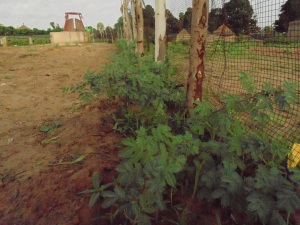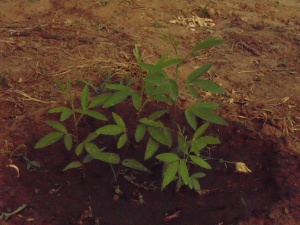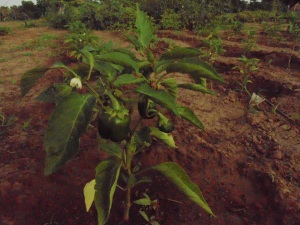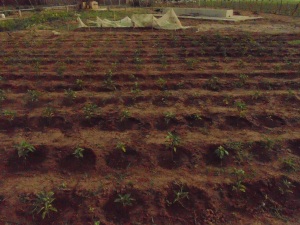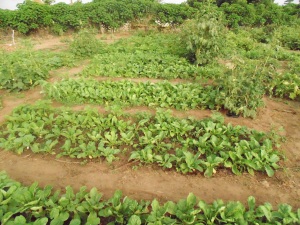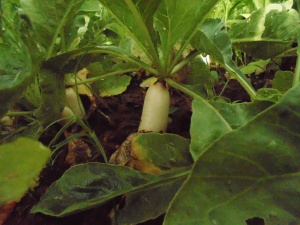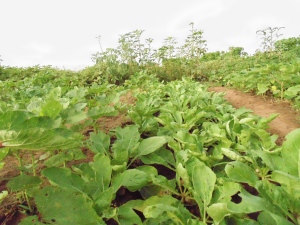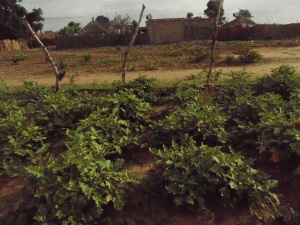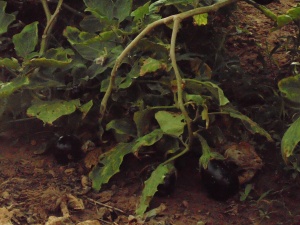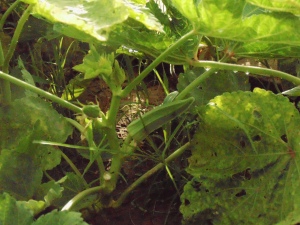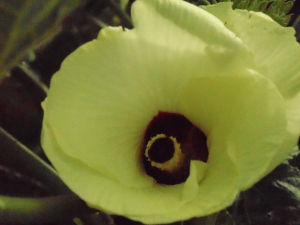The rains started very late this year, so late that Ndorong-Sereer and the neighboring village of Yerwago called for a rain ceremony, last performed in 1999. Women from the village dressed in men’s clothing and danced for hours on top of the grave of an elder whom was said to have had ‘xom xom’ (wisdom), ‘yeef yadju’ (wide thoughts) and could seduce the rain whenever he pleased. The rains came a week later and have been consistent since, arriving three to four times a week. Though much meeker than last year’s rainy season, when everyone was stranded in village because the roads were completely inundated and there was no access to fresh fish or veggies, the current rains have done an adequate job at keeping our soil saturated for our thirsty rainy season veggies. The women’s garden is lush with daikon radish, okra, eggplant (the third round!), green peppers, sweet potatoes, and bitter tomatoes. We’ve also been able to transplant papayas and a live-fence of Acacia nilotica, a thorny, nitrogen-fixing species which, in addition to protecting the perimeter of the garden, the bark is also used to treat stomach ailments. Oh yeah, and the garden expanded a bit.
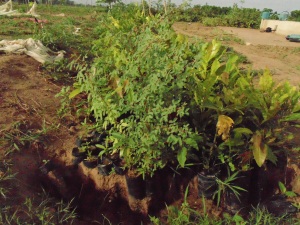
Remember the trench we dug for the tree sacks (if you don’t, scroll down to the previous post)? All filled with trees! Each group has 30 cashews, 30 mangoes, 5 papayas, 5 oranges, and 5 lemons.

A medley of mangoes growing in tree sacks. Each woman brought five seeds from their preferred mango variety. In Sereer, you don’t ‘naam’ (eat) a mango, but ‘mool’ (savor) a mango.
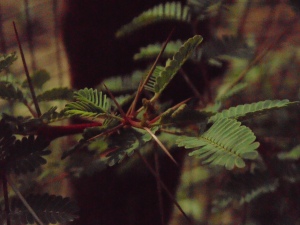
The Acacia nilotica live-fence which will replace the chicken wire and grillage fencing that is already falling apart. A. nilotica is a fast growing thorny species with nitrogen-fixing roots and massive amounts of leaf litter which help add much needed nutrients to the soil. When the tree matures, the bark is shaved and boiled to treat stomach pains. We out-planted more than 500 A. nilotica to complete the live-fence. Weeding around the trees is not my favorite activity in the garden.
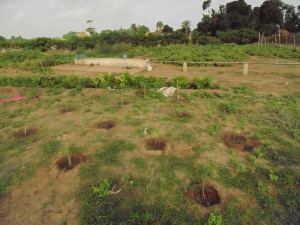
Pigeon pea (Cajanus cajan) alternately spaced at 2×2 meters apart to serve as a windbreak. Another nitrogen-fixing species which produces a prolific amount of delicious beans.
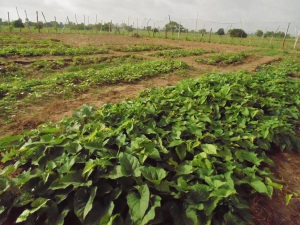
Sweet potatoes transplanted by vine in 5x1m beds. One of the easiest vegetables to grow, but still very expensive at the market. The leaves are surprisingly delicious boiled and salted.
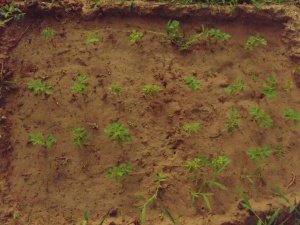
Each group planted a Moringa intensive bed with 30 Moringa trees. Once they reach waist height, they’ll be harvested for leaves, cut down to ankle level and grow back again.
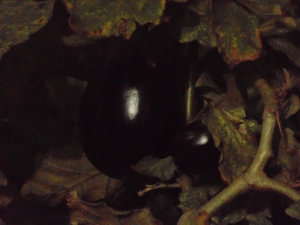
Eggplant! This has been the biggest money maker in the garden so far. The women have three 3x1m beds of eggplant which ensure a constant supply every week to be sold at the market.
Young okra flowering and fruiting. Another big money maker at the market since it fruits quickly and often. It’s also one of the easiest to intercrop, as seen here planted near the daikon radish.

